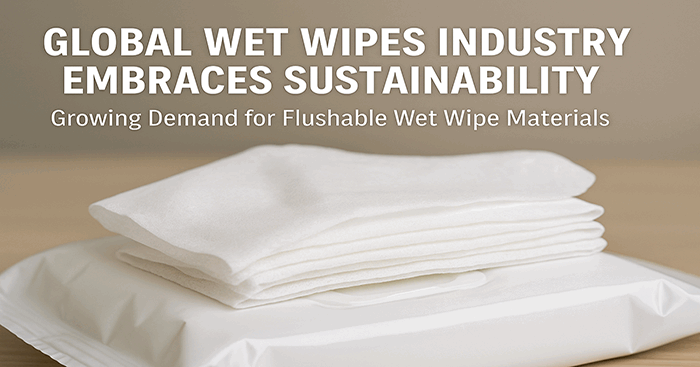As environmental regulations continue to tighten and consumer health awareness increases, biodegradable wet wipe materials are becoming a focal point in the global wet wipe industry. Wet wipes made from these materials not only meet daily cleaning needs but also break down quickly after use, reducing environmental impact, and are leading the wet wipe industry into a ‘green revolution’ era.
I. Environmental Regulations Drive Industry Upgrades
In recent years, numerous countries and regions worldwide have introduced environmental regulations targeting disposable wet wipes. For example, the European Union requires the phased-out use of certain single-use plastic products and promotes the adoption of biodegradable and
flushable materials; some U.S. states have also implemented wet wipe labelling management systems, mandating clear labelling of ‘flushable’ or ‘non-flushable.’ These regulations have not only altered consumer purchasing habits but also compelled manufacturers to upgrade their raw material selection and production processes.
Against this backdrop, the market demand for flushable wet wipe materials has experienced explosive growth. According to market research institutions, by 2028, the global flushable wet wipe market size is expected to more than double compared to 2023, while raw material demand is projected to maintain an annual growth rate of over 10%.
II. Raw Material Advantages Shine Through, Suitable for Multiple Application Scenarios
Dissolvable wet wipe raw materials typically use wood pulp, viscose fibre, or other plant fibres, combined with advanced hydroentanglement or air-laid processes. This combination ensures the wet wipes' strength and softness during use while enabling them to dissolve quickly in water, preventing clogs in toilets and drainage pipes.
III. In terms of application scenarios, wet wipes made from these raw materials are widely used in:
Infant care: Skin-friendly and soft, reducing chemical irritation
Personal hygiene: Suitable for outdoor use, travel, and daily household use
Medical care: Prevents cross-contamination and can be safely disposed of after use
Home cleaning: Leaves no fibre residue and does not pollute the environment
These eco-friendly, safe, and convenient characteristics have made flushable wet wipes increasingly popular among consumers.
IV. Industry Experts: A Win-Win for the Environment and the Market
Industry experts point out that flushable wet wipe materials are not only an inevitable choice in line with environmental trends but also a key factor for companies to enhance their competitiveness. In today's world where consumers increasingly prioritise sustainability, brands that have proactively adopted eco-friendly raw materials are more likely to gain market favour and policy support.
Additionally, as renewable raw material technology advances, the cost gap in producing flushable wet wipes is gradually narrowing. It is projected that market penetration will significantly increase over the next three to five years. This will not only help alleviate the environmental pressure caused by disposable wet wipes but also open up new growth opportunities for the wet wipe industry.
V. Future Trends: Green Manufacturing Becomes the Mainstream
In the future, research and development of flushable wet wipe materials will increasingly focus on:
The use of renewable resources — reducing reliance on petrochemical raw materials
Energy-saving and emission-reduction in production processes — lowering carbon footprints
Enhancing decomposition performance — shortening degradation cycles and improving dispersibility in water
International certification and standardisation — ensuring product recognition in global markets
It is foreseeable that, with policy guidance and consumption upgrades, green manufacturing will become the new norm in the wet wipe industry, and biodegradable wet wipe materials will be one of the most critical components of this transformation.

